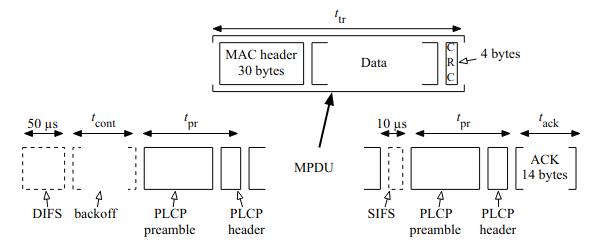std::bodun::blog
PhD student at University of Texas at Austin 🤘. Doing systems for ML.
马上订阅 std::bodun::blog RSS 更新: https://www.bodunhu.com/blog/index.xml
Performance Anomaly of 802.11b
This research is conducted by Martin Heusse, Franck Rousseau, Cilles Berger-Sabbatel, Andrzej Duda on analyzing the performance of the IEEE 802.11b wireless local area networks. Degraded transmitting rate is caused by CSMA/CA channel access method.
Overview
The performance of the IEEE 802.11b wireless local area networks have degraded performances when some mobile hosts use a lower bit rate than the others, which is caused by CSMA/CA channel access method. When one host changes it modulation type which degrades bit rate, it occupies the channel for a longer time, causing other hosts still using higher bit rate to be penalized. The paper Performance Anamoly of 802.11b analyzes how such anomaly works.
Transmission Overhead
Consider there is only a single host in a 802.11b cell transmitting a single data frame. The overall transmission time is expressed as:
$$T = t_{tr} + t_{ov}$$
where the constant overhead
$$t_{ov} = DIFS + t_{pr} + SIFS + t_{pr} + t_{ack}$$
The transmission process can be represented by the graph
When there are multiple hosts attempting to transmit, a host will execute the exponential backoff algorithm - it waits for a random interval to avoid saturating the channel, resulting in extra time spent in the contention...
剩余内容已隐藏
